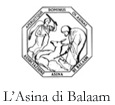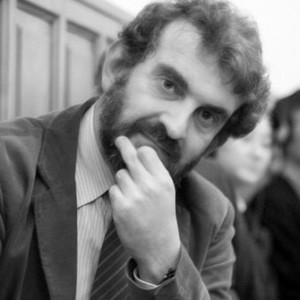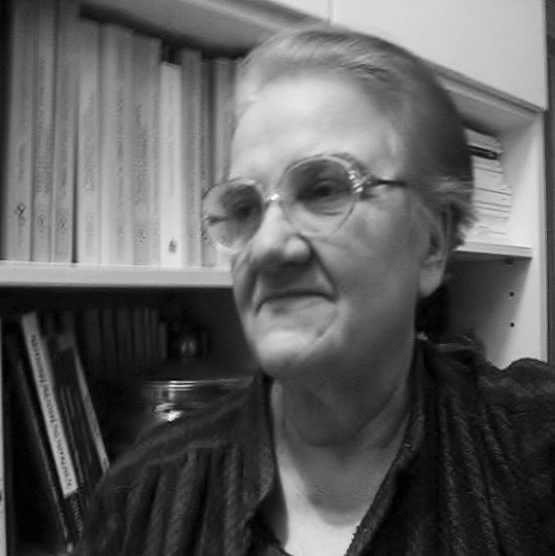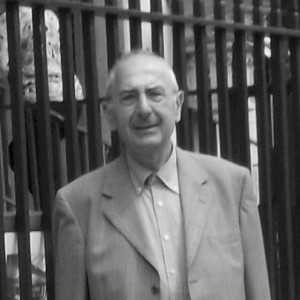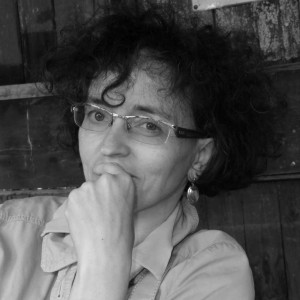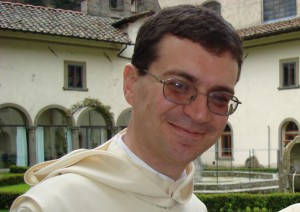Alcuin Reid resta lontano dalla “partecipazione attiva”: con alcune necessarie precisazioni
Una recente intervista ad Alcuin Reid mette al centro una concezione inadeguata di “partecipazione attiva”. Cui faccio seguire alcune mie osservazioni.
FRIDAY, FEBRUARY 07, 2014
The ‘Consilium ad Exsequendam’ at 50 – An Interview with Dom Alcuin Reid (Part 1)
BY GREGORY DIPIPPO
Having marked the 50th anniversary of the publication of Sacrosanctum Concilium, we recently (on January 25th) passed the 50th anniversary of the committee established by Pope Paul VI to implement it, the “Consilium ad exsequendam Constitutionem liturgicam Sacrosanctum Concilium.” NLM recently asked Dom Alcuin Reid, whose scholarship on the liturgical reform needs no introduction, about the formation of the Consilium, its activities, and the results of what it produced. His replies include previously unpublished material from his research. This is the first part of the interview; the second will be published on Wednesday.
NLM: Dom Alcuin, you have written and talked a great deal about the pre-Conciliar Liturgical Movement, and Sacrosanctum Concilium as the consummation of its ideals. Can you describe what the Council Fathers envisioned would be the result of the Constitution?
Dom Alcuin: The Council desired that all of Christ’s faithful would truly and fruitfully connect with the action of Christ in the Sacred Liturgy through full, conscious and active participation in its rites and prayers. This connectivity is what was called for by St Pius X, drawing on what Dom Guèranger and others had called for in the nineteenth century and before, and is what the twentieth century liturgical movement promoted widely.
Liturgical participation includes physical participation in the rites, being able to comprehend them, respond, sing and so on. But these external activities are means to an end and are not ends in themselves. The Council was not calling for liturgical activism, but rather for that fruitful connectivity, so that that the Sacred Liturgy would truly become the source and summit of Christian life for all, and thus bring about true renewal of the Church and of the world.
The Council Fathers and Sacrosanctum Concilium itself did not regard the participation for which they were calling as substantially different from the participation called for by Pius X, or by Pius XII in Mediator Dei. There is a clear continuity, and certainly a developing one (as seen in some of the reforms of Pius XII), in the principles from Pius X to Sacrosanctum Concilium.
At present some speak as if there is a “participation 1” and “participation 2”, where 1 = pre-conciliar and 2 = post-conciliar. That may reflect what came to pass after the Council as a result of how the reform was implemented, or it may relect what some liturgists want to be the case, but what we need to be clear about—and indeed recover—is the Conciliar concept of participation. The Fathers of the Council who debated this in October and November of 1962, who approved the first chapter of the Constitution that December, and the Constitution as a whole in December 1963, were envisaging participation in the Roman rite as it was then, moderately reformed with more vernacular and various simplifications, etc. Speaking of the Holy Mass, article 48 lays down:
“The Church…earnestly desires that Christ’s faithful, when present at this mystery of faith, should not be there as strangers or silent spectators; on the contrary, through a good understanding of the rites and prayers they should take part in the sacred action conscious of what they are doing, with devotion and full collaboration.”
This is participation à-la-Concile. What is essential is participation that is conscious and understanding: i.e. internal. Certainly the Council expects the faithful to be able actively to “take part” (article 30 explains how), however the Council itself does not call for or justify the complete vernacularisation of the rites, the relegation of any liturgical music in which the people cannot all immediately join in, the requirement that Mass only be celebrated versus populum, the introduction of a responsorial psalm after the first Scripture reading, of multiple Eucharistic prayers, etc., in order to facilitate this. The historical fact is that these and many other components of “participation 2” are contingent elements imposed in the name of Vatican II or of post-conciliar liturgical ideologies, but are in fact not of the Council itself.
NLM: So how did the Fathers envision that liturgical participation would be achieved?
Dom Alcuin: The Fathers of the Council foresaw that two things were necessary. Firstly, they saw the urgent need for a thorough immersion and formation of all, clergy and laity, in the spirit and power of the liturgy. This was and is the “hard work” of liturgical renewal that Sacrosanctum Concilium requires, and it has to be said that it has not been attended to as well as it needs to have been. Without laying solid foundations there is a risk of building on sand, or as the Constitution alludes at the end of article 14, without this formation hopes of realizing the Council’s liturgical vision would be “futile”.
The second thing the Council held as necessary was ritual reform. Continuing what had been begun in the pontificate of Pius XII, it called for a general liturgical reform (which had been envisaged from at least the 1940s). Specifically it authorized the increased use of the vernacular, the expansion of the lectionary, the reintroduction of Holy Communion under both species on particular occasions, the extended use of concelebration, ritual simplifications, the return of bidding prayers, etc. But we must be clear: the reason for the reform of the rites was to facilitate fruitful participation in the liturgy. The purpose of these ritual reforms—according to Sacrosanctum Concilium—is to facilitate true and fruitful connection with the action of Christ in the Sacred Liturgy. That is what is essential: not the presence or absence of bidding prayers or of some other particular ritual reform!
NLM: Is it fair to say that the document was approved in the belief that the ensuing reform of the liturgy would be a fairly mild one?
Dom Alcuin: Without doubt. Article 23’s insistence that “there must be no innovations unless the good of the Church genuinely and certainly requires them; and care must be taken that any new forms adopted should in some way grow organically from forms already existing” makes perfectly clear that the Fathers of Council did not have a revolution, or what some like to call an “epochal shift” to some ‘form’ of liturgy that is communal in essence in a way in which the preconciliar liturgy was not, in mind. As if the liturgy hitherto was not the community of the ecclesia at worship and could not serve perfectly well as such, moderately reformed so as to facilitate greater participation, in the future!
Those who assert this sort of thing are not sound historians of the Council or of the liturgy. This is fantasy proposing a revisionist history that seeks to justify interpretations read into Sacrosanctum Concilium after the Council, in spite of its carefully nuanced language and the clear intentions of the Fathers in aula.
Let one example suffice. Article 50 (on the reform of the order of Mass) was considered from 29th October 1962. Some Fathers saw this article as a licence for revolution and protested strongly. The opening intervention of Francis Cardinal Spellman and that of Cardinal Ottaviani on the following day are noteworthy for their critical content. Those of Archbishop Frederico Melendro SJ and Bishop George Dwyer on October 30th, as well as that of Bishop Alberto DeVoto on the 31st, called for clarification. Later the same morning Bishop Léon-Arthur Elchinger intervened:
“I propose that the entire text of this article be conserved but that it may be clarified by the publication of the complete [explanatory] declaratio prepared by the preparatory commission under this article. So to ‘calm the spirits’ of those that fear a complete revolution of the Order of Mass and the death of the Roman Rite, this declaratio does not propose for us a revolution but only an evolution—a pastoral evolution—something sound and prudent.”
In the next session, November 5th, Bishop Henri Jenny, intervened. A member of the liturgical preparatory and conciliar commissions on the liturgy (and later of the Consilium) he set forth the content of the declaratio. Before outlining the specific reforms, the assurance was given that: “Hodiernus Ordo Missae, qui decursu saeculorum succrevit, certe retinendus est.” (“The current Ordo Missae, which has grown up in the course of the centuries, is certainly to be retained.”) The resonance of article 23’s principle—that sound tradition is to be retained whilst the way is to be open for legitimate progress—is clear.
When the text of chapter II as revised in the light of the Fathers’ interventions was presented in October 1963, a printed copy of this declaratio was given to each of the Fathers, again including the assurance “Hodiernus Ordo Missæ, qui decursu saeculorum succrevit, retinendus est.” The text of article 50 had a second sentence added which included the statement that the “rites are now to be restored to the vigour which they had in the days of the Holy Fathers.”
If we ask what the Fathers understood and intended by this article in approving on chapter II of the Constitution, this history must be taken into account. Whilst the addition of the reference to “the vigour” had “in the days of the Holy Fathers” may have subtly opened a door through which much later passed, from the Conciliar debate and redaction of this article itself, it is not possible to assert that the Fathers of the Council intended anything beyond a moderate reform of the rite of the Mass as specified in the declaratio they were given before voting—along the lines of what appeared in the Ordo Missae jointly promulgated by the Sacred Congregation for Rites and the Consilium on 27 January 1965 with a decree mandating that it be adopted in new editions of the missal. The Consilium, however, regarded the 1965 Ordo as merely provisional.
(fonte: http://www.newliturgicalmovement.org/2014/02/the-consilium-ad-exsequendam-at-50_6845.html)
Osservazioni sulla Intervista di Alcuin Reid
(di Andrea Grillo)
Anche questo testo di A. Reid conferma l’impressione che già ho avuto modo di chiarire, dopo la pubblicazione della sua recensione al mio libro “Oltre Pio V” e con il successivo dibattito su questo blog. In questa intervista, tuttavia, emerge ancora meglio il punto sottile, ma decisivo, dove mi sembra di dover contestare il modo con cui Reid legge la storia e teorizza intorno alla Riforma Liturgica. Vorrei riprendere, punto per punto, il ragionamento che sta al centro di questa sua esposizione:
a) Egli afferma, del tutto a ragione, che l’interesse principale del ML e del Concilio era quello di favorire una maggiore partecipazione del popolo di Dio alla Sacra Liturgia.
b) Quando però descrive che cosa è la “partecipazione attiva” egli procede in modo del tutto inadeguato, perché pretende di appiattire la “actuosa participatio” di SC sulla partecipazione dei fedeli teorizzata da Pio XII in Mediator Dei.
c) E’ vero che egli ammette che la partecipazione “include anche la partecipazione fisica”, ma considerare tutto ciò che è esterno come rigorosamente subordinato all’interno, perdendo proprio così la novità che il Concilio ha saputo far valere, riprendendo alcuni spunti dell’ultimo magistero di Pio XII (ma non quello di Mediator Dei) costituisce un errore di metodo che non riesce a trovare rimedio successivamente. In una visione di questo tipo, la Riforma Liturgica risulta “inspiegabile”. Non importa se “leggera” o “pesante”, è la Riforma stessa a cadere nel non senso. Solo un diverso concetto di partecipazione “esige” la Riforma: la esige soltanto come strumento, ma cionondimeno ne ha un bisogno essenziale, che Reid non riesce in alcun modo a dimostrare a causa del concetto inadeguato di partecipazione che cerca di proiettare sul Concilio.
d) Ancora più interessante è il testo di Reid quando cerca di raffigurare – in modo caricaturale – la concezione esatta di tutti coloro che avvertono – leggendo i testi senza preconcetti tradizionalistici – che vi è una “partecipazione 1” (preconciliare) e una “partecipazione 2” (postconciliare). Su questo punto Reid propone un ragionamento piuttosto curioso e alquanto contorto: egli vuole stabilire non ciò che è pre- o post-conciliare, ma ciò che il Concilio stesso ha detto. Secondo lui il Concilio, nel n. 48 di SC, prevede una forma di “partecipazione” sostanzialmente in continuità con Mediator Dei e che prevede soltanto una “riforma moderata” (?!)
e) E’ curioso che Reid, che ha la pretesa di far parlare direttamente il Concilio, taccia il fatto che, proprio in seguito al . 48, è il Concilio stesso a prevedere, esplicitamente e autorevolmente, una serie di profonde riforme dell’Ordo Missae, che si possono comprendere soltanto come la risposta – iniziale – ad una domanda di partecipazione diversa da quella precedente. E’ del tutto sorprendente che Reid voglia considerare questa domanda come “”not of the Council itself”! Forse ha dimenticato di leggere i numeri 51-57 di SC? Perché mai, avendo la pretesa di far parlare direttamente il Concilio, su questo passaggio decisivo dà la parola a tutti, meno che al Concilio stesso?
f) Effettivamente è lo stesso Reid a rendersi conto di questa difficoltà. Dopo aver giustamente ricordato che i Padri Conciliari avevano di mira due cose: la principale è la formazione di tutti ai riti, e in secondo luogo la Riforma dei riti stessi, egli mostra la sua difficoltà, perché a riguardo del n.50 di SC egli non parla più del Concilio, ma dei documenti e dei dibattiti che hanno tentato di interpretarlo restrittivamente. Qui non è più la lettera del Concilio ad essere rilevante, ma piuttosto il dibattito, di cui si vorrebbe valorizzare soltanto il fronte più conservatore e intimorito dalla Riforma ormai prossima.
g) Ciò che colpisce, in ultima analisi, è la coesistenza, in Reid, di un duplice livello di analisi. E’ del tutto corretto dire che la Riforma è stata concepita e progettata al servizio della formazione/iniziazione al rito. Ma è contraddittorio non valorizzare la Riforma come strumento necessario per quella formazione, che il VO non era e non è tuttora – a maggior ragione – in grado di assicurare, proprio a causa dei suoi limiti storici e strutturali.
h) Infine, la pretesa di A. Reid di giudicare la storia successiva a partire da una ricostruzione unilaterale e tendenziosa del dibattito conciliare – dell’immediato postconcilio – appare una operazione pesantemente ideologica, priva di valore storico e con effetti (e cause) pericolosamente tradizionalistici. Aderire al progetto conciliare non significa auspicare una “riforma della riforma”, azzerando la storia dal 1965 in poi, ma lavorare oggi, all’interno dell’unico Ordo Missae riformato, per conseguire quegli obiettivi che il Concilio ha dischiuso e che il lavoro ecclesiale successivo non solo non ha contraddetto, ma ha ulteriormente approfondito e arricchito.









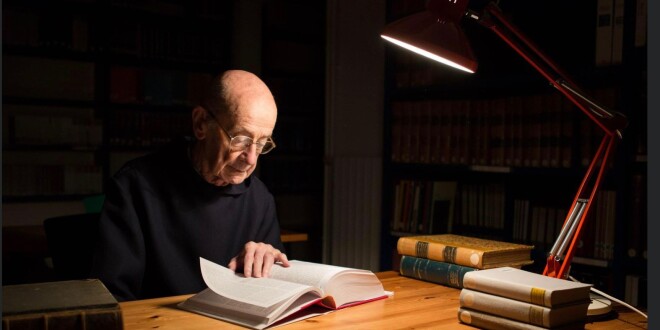


















 Area personale
Area personale



